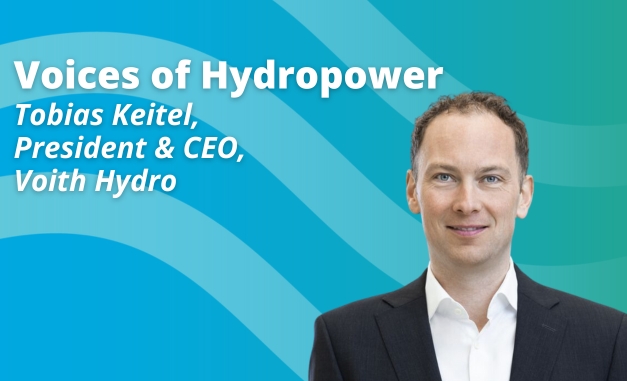Interview: developing the G-res tool
We are moving towards the public release of the G-res tool, a framework for reporting the likely greenhouse-gas (GHG) impact of freshwater reservoirs. Yves Prairie, professor of biology at the University of Québec at Montréal and UNESCO chair in global environmental change, is one of the scientists leading on this UNESCO/IHA project. We spoke to him about the final stages in the development of the tool.

Who will be able to use and benefit from the G-res tool?
It’s becoming important for the hydropower sector to be able to estimate and report on reservoir GHG emissions and then allocate these to the various purposes of the reservoir, including hydropower generation. Increasingly, owners, lending institutions and authorities are looking for assurances that specific assets are low-carbon in character. The G-res tool will provide a way to assess these impacts without involving large-scale field campaigns and multi-year studies, which may not be financially viable.
National agencies may also use the G-res tool to calculate the contribution of freshwater reservoirs to the GHG inventory of an entire country. For example, scientists in China have already applied an earlier version of the tool to this effect. In China, there are over 80,000 reservoirs, the majority of which are not used for hydropower, so nobody could afford to measure emissions at that many sites, but the G-res tool could provide an accurate estimation of the GHG footprint of all these reservoirs, from a national point of view.
This was not possible in the past. Previously, the GHG contribution of freshwater reservoirs to national inventories was calculated as an average; each reservoir was treated the same. Now we know that each reservoir may have a different net GHG impact, and we need to be able to take those differences into account when we report on this.
What are the next steps in developing the G-res tool?
We have completed the first phase in the development of the G-res tool, and now we are embarking on the next phase. The first phase was the development of a modelling framework. We put together all of the available data to create a model that would allow anyone to estimate the GHG emissions of a freshwater reservoir.
The next phase is to validate the G-res tool, and extend its scope. Currently, the G-res tool is based on measured data from about three hundred field observations. But now that we have developed the tool, we can apply it to thousands of reservoirs. This will give us a much clearer picture of the global situation.
It was very difficult to get a global picture of GHG emissions from freshwater reservoirs, but that will change with the public release of the G-res tool later this year."
For example, what are the most important factors for GHG emissions in various places around the world? Once we have applied the tool to thousands of reservoirs, we will have a far more accurate understanding of GHG emissions of freshwater reservoirs all around the world.
Over the past two decades, GHG emissions from reservoirs have often been the subject of debate. But it was a debate that was rather empty, because there were not that many high-quality studies to refer to. It was very difficult to get a global picture of GHG emissions from freshwater reservoirs, but that will change with the public release of the G-res tool later this year.
How can hydropower companies get involved in this research?
A lot of hydropower companies have already measured GHG emissions at reservoir sites, but often these measurements are only reported on in the grey literature, rather than in peer-reviewed scientific journals, so we don’t have access to these measurements. It would be useful if companies could use the G-res tool to validate this data.
The G-res tool will also be very useful for future research projects. The model is capable of predicting the pathways of GHG emissions – will it be mostly methane? Will it be mostly carbon dioxide? Will emissions mostly come from the reservoir surface? Or will they be produced as degassing downstream of the reservoir?
These are all things which the model should be able to predict. It will be useful for future research projects to go out and test these predictions.
What are some of the new features of the G-res tool?
Something novel about the G-res tool will be its ability to attribute impacts among the various services which a reservoir provides. This is something that’s very important, because most reservoirs are multipurpose reservoirs. They aren’t made just to provide hydropower, but also for irrigation, navigation, flood protection, and often many other purposes. So it will be important to attribute GHG impacts to each different service.
Another innovative feature of the G-res tool is its ability to calculate the net impact of a future reservoir on the GHG regime of a particular site. This is a significant breakthrough. The net impact is a comparison of the GHG regime in the landscape before the reservoir was impounded with the new GHG regime after impoundment. It’s the difference between the two that tells us the actual impact of that reservoir.
This interview is featured in our Activity and Strategy Report 2016–17. You can download the report here and find out more about our work, including our knowledge-building the greenhouse-gas status of freshwater reservoirs. If you would like to find out more or get involved in this research, please feel free to contact us.










